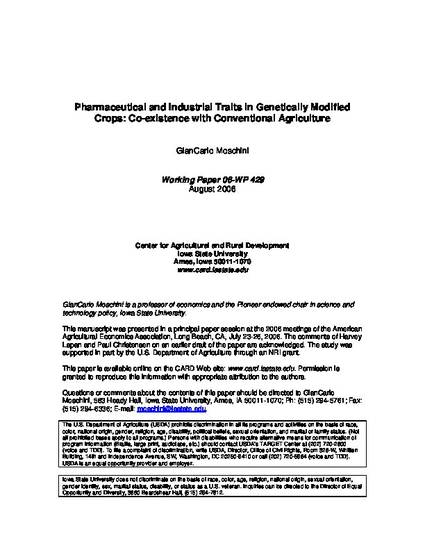
The first ten years of commercial experience with genetically modified (GM) crops must be considered a success, albeit a qualified one. Adoption has been remarkable: first commercially planted in 1996, world GM crop planting reached 220 million acres in 2005 (James 2005). But large-scale adoption has been confined to a few crops grown in only a few countries, and the currently widely grown GM crops are all based on only a handful of so-called input traits that confer herbicide tolerance and/or pest resistance. Furthermore, this technology has been met with hostility by some consumer groups and segments of the public. And, the introduction of GM crops means that supplying non-GM products now requires (relative to the pre-innovation situation) additional costly identity preservation and segregation activities (Bullock and Desquilbet 2002). Thus, the innovation process has, in this context, brought about a new market failure, an externality on the production of conventional (non-GM) products (Lapan and Moschini 2004). Such unintended economic implications of the introduction of GM crops are central to the current debate about the “coexistence” of GM and non-GM agriculture.
Available at: http://works.bepress.com/giancarlo-moschini/66/

This is a working paper of an article from American Journal of Agricultural Economics 88 (2006): 1184, doi: 10.1111/j.1467-8276.2006.00931.x.